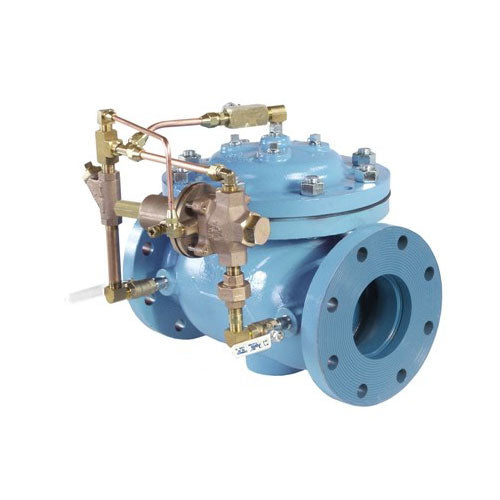Optimizing System Control with High-Performance Control Valves
Optimizing System Control with High-Performance Control Valves
Blog Article

Maximize Power Cost Savings and Comfort With Advanced Building Automation Controls
In the realm of modern-day style and center administration, the assimilation of innovative structure automation manages stands as a pivotal innovation. The merging of innovation and sustainability has actually birthed a new era where power performance, comfort optimization, and operational streamlining are no more achievable realities however far-off desires. By utilizing the power of automation, structures can adapt, react, and evolve in methods that were once unbelievable. The potential for significant power savings and boosted comfort is not simply a pledge however a possibility waiting to be satisfied. This standard change in building administration holds the key to opening a world where environmental conscientiousness and owner wellness harmoniously coexist within the walls of our structures.
Energy Effectiveness Advantages
Power efficiency benefits can significantly minimize power usage and operational expenses in structures. Energy-efficient systems, such as sophisticated structure automation controls, can optimize the usage of sources like lights, air conditioning, and home heating, leading to reduced power expenses over time.
Additionally, improved power efficiency can extend the lifespan of structure tools and systems. By running extra efficiently, HVAC systems, lighting fixture, and various other structure components experience much less deterioration, resulting in reduced upkeep and substitute prices. Additionally, energy-efficient structures typically command higher home worths and rental prices, giving lasting monetary benefits to owners.
In addition, energy performance can boost resident convenience and performance. Correctly managed indoor settings with optimum lighting and thermal problems develop a more enjoyable and favorable work space, causing enhanced staff member satisfaction and efficiency. In general, the energy performance advantages connected with advanced building automation controls are multifaceted, encompassing price savings, environmental stewardship, and resident health.
Improved Comfort Control
Enhancing comfort control in structure settings requires an innovative combination of advanced automation systems for optimum owner well-being. By using innovative structure automation controls, facilities can tailor the indoor setting to meet the particular needs and preferences of owners. These systems enable precise policy of air flow, lights, and temperature, creating a effective and comfortable atmosphere. Resident complete satisfaction and productivity are closely connected to thermal convenience, making it important to have systems in position that can adapt to transforming problems in real-time.
By incorporating these advanced controls, buildings can not just boost convenience but additionally enhance energy effectiveness by enhancing system procedures based on actual occupancy and usage patterns. Eventually, focusing on owner comfort via sophisticated automation systems leads to a much more pleasurable and healthier indoor environment.
Functional Efficiency Improvements

Additionally, the application of real-time tracking and analytics tools enables structure operators to determine power inefficiencies and functional abnormalities immediately. By constantly checking power usage patterns and system efficiency metrics, adjustments can be made in real-time to enhance energy usage and make sure peak operational effectiveness. control valves. Furthermore, integrating demand response techniques into structure automation controls can better enhance operational performance by dynamically changing energy usage based upon grid conditions and rates signals
Indoor Climate Optimization
Reliable interior environment optimization is a fundamental aspect of building automation controls, ensuring passengers' convenience and wellness while maximizing energy savings. By utilizing innovative sensing units and controls, building automation systems can constantly check and readjust temperature level, humidity levels, air high quality, and ventilation to create an optimum interior atmosphere. Keeping comfortable and consistent conditions not only boosts occupant contentment but additionally increases efficiency and overall wellness.
Indoor climate optimization likewise plays a critical role in power efficiency. By fine-tuning heating, cooling, and air flow systems based upon real-time data and tenancy patterns, building automation controls can considerably minimize energy usage - control valves. Executing strategies such as demand-controlled air flow and thermal zoning can help decrease energy waste while guaranteeing that each area of the structure obtains the needed conditioning.

Lasting Atmosphere Production
Structure automation controls not just optimize interior climate problems for power efficiency and resident comfort however additionally lay the structure for developing a lasting setting via calculated administration of systems and resources. By incorporating sophisticated structure automation technologies, such as sensors, actuators, and intelligent software, centers can readjust and check power usage in real-time to decrease waste and reduce their carbon footprint. These systems allow predictive maintenance, recognizing possible problems prior to they rise and maximizing tools efficiency to boost long life and effectiveness.
Furthermore, sustainable atmosphere production expands past power administration to encompass water conservation, waste decrease, and interior air top quality improvement. next Structure automation controls can regulate water use, detect leaks, and guarantee appropriate garbage disposal practices, contributing to general sustainability initiatives. Furthermore, by controlling and keeping an eye on ventilation and filtration systems, these technologies improve passenger health and wellness and productivity while reducing power usage associated with HVAC procedures.
Verdict
Finally, progressed structure automation manages offer significant advantages in terms of energy financial savings, convenience control, functional effectiveness, indoor environment optimization, and creating a lasting atmosphere. By carrying out these controls, structures can achieve ideal efficiency while reducing energy usage and boosting occupant comfort. It is apparent that using innovative automation technology is vital in enhancing structure performance and creating an extra sustainable future.
Power efficiency benefits can substantially decrease power usage and operational costs in buildings. In general, the energy effectiveness benefits linked with innovative structure automation controls are multifaceted, encompassing cost savings, ecological stewardship, and passenger wellness.
Furthermore, including demand action approaches into structure automation controls can further enhance functional performance by dynamically readjusting power usage based on grid conditions and pricing signals.
Structure automation controls not just enhance interior environment conditions for power effectiveness and occupant comfort yet likewise lay the browse around this site structure for developing a lasting atmosphere through tactical administration of sources and systems.In final thought, advanced structure automation manages deal considerable advantages in terms of power financial savings, comfort control, operational performance, indoor climate optimization, and producing a sustainable atmosphere.
Report this page